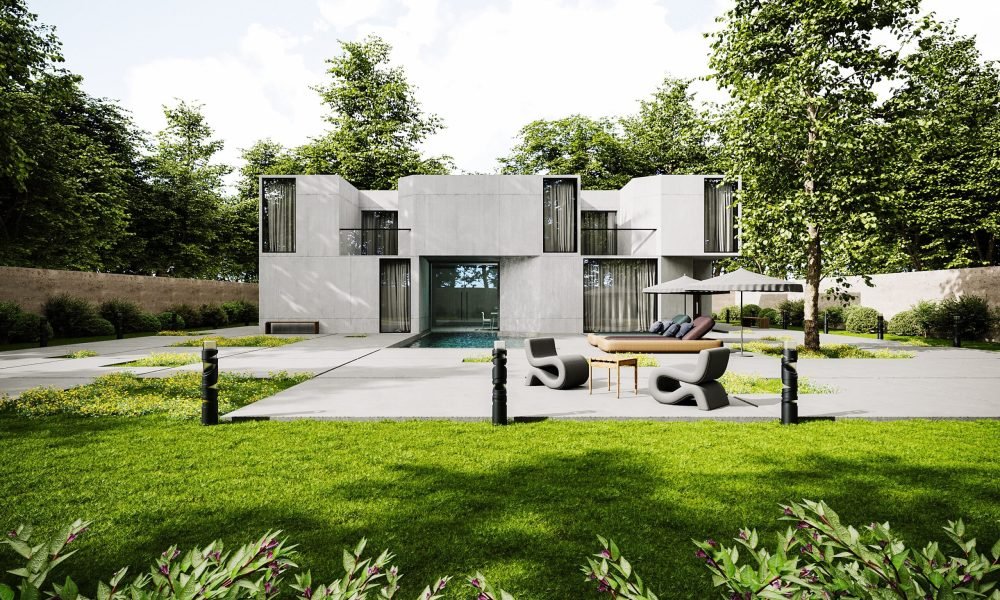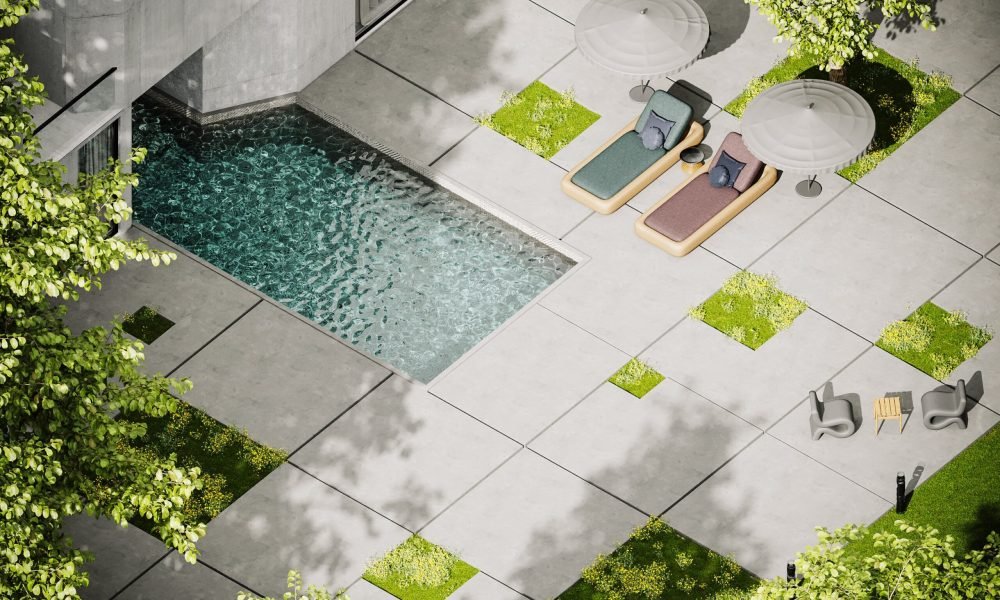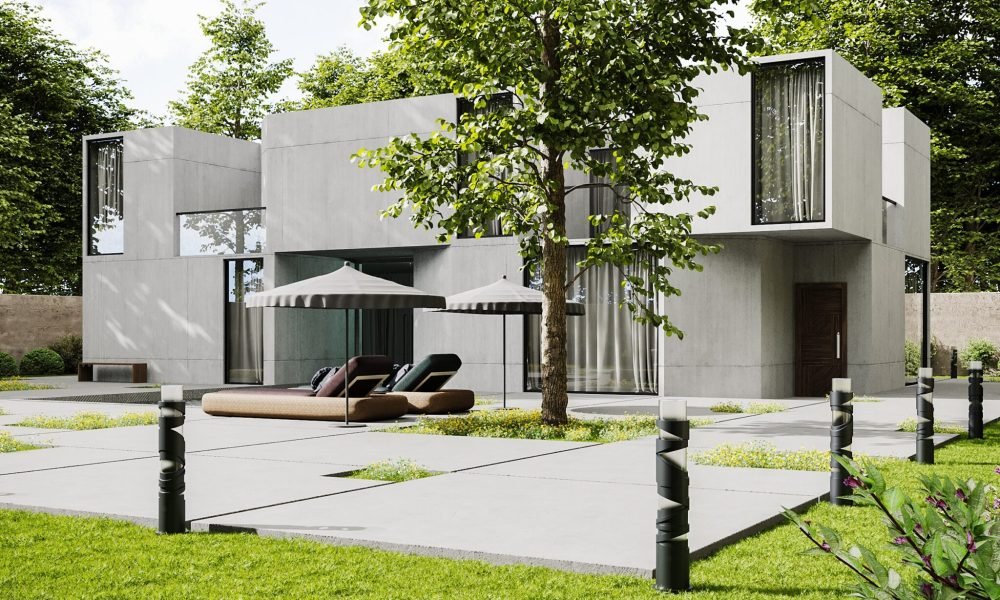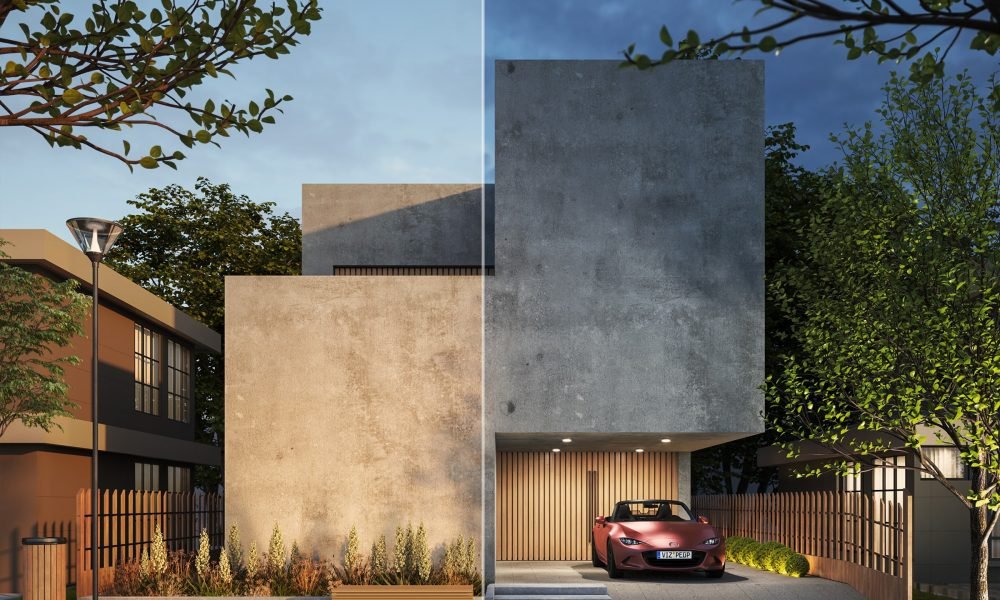Today, it is common practice for architects to use exterior building renderings in their projects. Because of this, architects and designers may present their work in a more lifelike and aesthetically pleasing format. Choosing the appropriate angles is crucial to the effectiveness of an exterior rendering. The 5 most effective angles for portraying the outside of a building are discussed here.
1. Front view

When depicting the exterior of a building or other structure, the front view is usually the most familiar and standard perspective utilized. It features the building’s primary facade and provides an unobstructed, all-around view of the edifice. Buildings with a grand entryway, distinctive architectural characteristics, or a striking appearance can benefit greatly from this perspective. The front perspective may help with that, too, by allowing you to ensure that your design is balanced and symmetrical.
2. Bird’s-eye view

In architecture, a bird’s-eye view is referred to as an aerial view or top view. This view point is great for showing off the complete structure and its setting. It works well for developments with many buildings on site or for projects with a huge footprint, such as commercial or institutional structures. In addition, the view point from above is perfect for showcasing outside features and landscaping like pools, gardens, and parks.
3. Side view

Seeing a structure from the side allows one to better appreciate its depth and complexity. The visitor is given a new view point from which to examine the structure and its setting. This tilt is best for irregularly shaped structures or those set into sloping lots. Particular features, such as balconies, windows, or cladding, might be highlighted in the side view.
4. Corner view

Given its scarcity, the corner view is a highly coveted amenity. This image shows the building from both the street and the neighboring properties’ perspectives. This view point is effective for corner structures or those with an interesting formal junction. The corner viewpoint is also an excellent opportunity to display the building’s rich palette of materials and textures.
5. Night view

In the nighttime, the building’s lighting takes on a more dramatic quality. This perspective point is perfect for illuminating landmarks or otherwise noticeable structures after dark. Nighttime is ideal for showcasing a building’s surroundings, whether they are a thriving metropolis or a more bucolic setting with mountains and lakes.
In conclusion, an exterior architecture rendering’s quality is proportionate to the viewpoint from which it was filmed. These multiple view points provide for invigorating new takes on the structure and the opportunity to highlight particular features of its design. Architecture and design professionals that care about making a good impression on clients, stakeholders, and the general public should put in the time and effort to find the finest possible view point for their projects.








